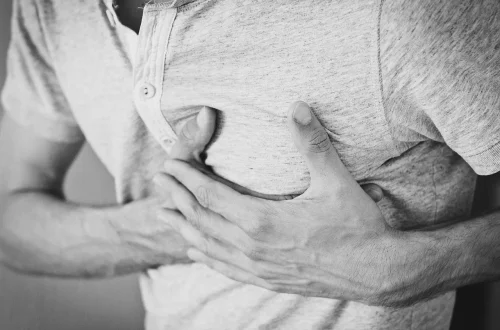
Understanding Clitoral Pain: Common Causes and Solutions
Understanding clitoral pain can be a challenging topic to navigate, yet it is an important aspect of women’s health that deserves attention and understanding. Clitoral discomfort can manifest in various forms, from mild irritation to sharp pain, and can significantly impact one’s quality of life. It is essential to recognize that experiencing pain in this area is not uncommon, and many women may find themselves facing similar issues at different points in their lives.
The clitoris is a complex organ with a rich network of nerves and tissues, making it particularly sensitive. Because of this sensitivity, any changes in the body, whether physical, hormonal, or psychological, can lead to discomfort or pain. Understanding the underlying causes of clitoral pain is crucial for effective management and treatment.
Moreover, societal stigma around discussing sexual health can lead to misunderstandings and a lack of awareness regarding clitoral pain. Many women may feel embarrassed or reluctant to seek help, further complicating their situation. By shedding light on this topic, we can encourage open conversations about women’s health issues and promote a greater understanding of clitoral pain, its causes, and potential solutions.
Common Causes of Clitoral Discomfort
Clitoral discomfort can arise from a variety of sources, each with its own set of contributing factors. One of the most common causes is irritation due to friction during sexual activity or exercise. This type of discomfort is often temporary and can be alleviated with proper lubrication or clothing adjustments. However, it is essential to distinguish between occasional irritation and persistent pain, as the latter may indicate a more serious underlying condition.
Another frequent cause of clitoral pain is infections, such as yeast infections or sexually transmitted infections (STIs). These conditions can lead to inflammation and swelling, resulting in pain and discomfort in the clitoral area. Symptoms may include itching, unusual discharge, and redness, which can help individuals identify the issue and seek appropriate medical care.
Hormonal changes, particularly those related to the menstrual cycle, pregnancy, or menopause, can also influence clitoral sensitivity and pain levels. Fluctuations in estrogen and progesterone can lead to changes in vaginal lubrication and tissue elasticity, potentially causing discomfort during intercourse or other activities.
Additionally, conditions such as vulvodynia, which is characterized by chronic vulvar pain without an identifiable cause, can significantly impact clitoral sensitivity. This condition can be challenging to diagnose and may require a comprehensive evaluation by a healthcare professional. Understanding the various causes of clitoral discomfort is vital for effective treatment and management strategies.
Impact of Psychological Factors on Clitoral Pain
It is important to recognize that psychological factors can play a significant role in the experience of clitoral pain. Stress, anxiety, and depression can all contribute to heightened sensitivity and discomfort in the genital area. The mind-body connection is powerful, and emotional well-being is closely linked to physical health.
For many women, past trauma or negative sexual experiences can lead to psychological barriers that manifest as physical pain. This phenomenon, often referred to as psychogenic pain, underscores the importance of addressing emotional health when dealing with chronic clitoral discomfort. Therapy and counseling can be effective solutions for women struggling with these issues, providing a safe space to process emotions and experiences.
Additionally, societal attitudes and stigmas surrounding female sexuality can lead to feelings of shame or embarrassment about discussing clitoral pain. This can further exacerbate psychological distress and contribute to a cycle of discomfort. Promoting open dialogue around women’s health issues, including sexual health, can help reduce stigma and empower women to seek support.
Moreover, practices such as mindfulness and relaxation techniques can aid in reducing stress and anxiety, potentially alleviating clitoral pain. Engaging in self-care routines and prioritizing mental health can have a positive impact on physical well-being, including the experience of clitoral sensitivity and discomfort.
Effective Solutions for Managing Clitoral Pain
Managing clitoral pain often requires a multifaceted approach, addressing both physical and psychological aspects of the issue. One of the first steps is to consult with a healthcare professional for an accurate diagnosis. Understanding the underlying cause of the pain is crucial for determining the most effective treatment options.
For cases of irritation or discomfort caused by friction, using water-based lubricants during sexual activity can significantly reduce pain. It is also advisable to wear breathable, cotton underwear and avoid tight clothing that may exacerbate friction and irritation.
In situations where infections are identified as the cause of clitoral pain, appropriate medical treatment is crucial. This may involve antifungal or antibiotic medications, depending on the specific infection. Regular gynecological check-ups can help in early detection and treatment of such conditions.
For those experiencing hormonal changes, hormone therapy may be an option. This should be discussed with a healthcare provider, who can guide individuals through the pros and cons of different treatments. Additionally, engaging in pelvic floor exercises can strengthen the muscles in the pelvic area, potentially reducing discomfort.
For chronic pain conditions like vulvodynia, a comprehensive treatment plan may include physical therapy, medications, and counseling. A multidisciplinary approach can help manage symptoms more effectively and improve the overall quality of life.
Lastly, fostering a supportive environment where women feel comfortable discussing their experiences is vital. Engaging in open conversations about clitoral pain and sexual health can help reduce stigma and encourage women to seek the help they need.
In conclusion, clitoral pain is a complex issue that can arise from various causes, including physical, psychological, and emotional factors. By understanding these dimensions, women can take proactive steps toward managing their discomfort and enhancing their overall sexual health.
**Disclaimer:** This article is not intended as medical advice. If you are experiencing health issues, it is essential to consult with a healthcare professional for personalized guidance and treatment.




